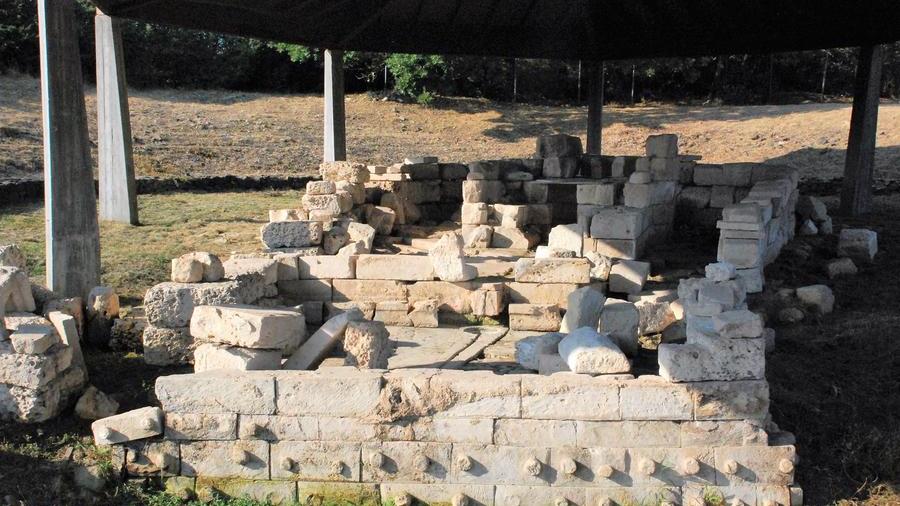Anglona, on the traces of ancient civilizations
The fascinating vestiges of the peoples who lived for millennia on the fertile plains of the Coghinas
In a “mythical time”, the communities of Anglona shared in part an ancient common descent derived from the ancient Proto-Sardinian Balari people from the Iberian Peninsula who came into contact with the indigenous communities that settled in the fertile lands crossed by the Coghinas river, chosen by the first people who populated Sardinia. The “Balaròi”, which in the ancient pre-Roman language of the Corsicans meant “fugitives-escapee” who came into contact with the locals during the centuries were subjected to a process of assimilation by sharing the Nuragic culture spread throughout the island known for the construction of nuraghi, tombs of the giants and sacred wells. In Anglona, in addition to hundreds of nuraghi, some marvelous sacred wells have emerged so far, particular hypogeic temple structures found throughout Sardinia and intended during the Bronze Age for water worship. One of these is the inserted one of the archaeological site of Irru, in the countryside of Nulvi, a settlement of considerable size, consisting of the nuraghe Irru, the village, burials and a sacred well. It is reached by following the signs along the Nulvi-Martis municipal road. Singular in size, state of preservation and fineness of the workmanship of the stone elements, the sacred well undoubtedly represents the most important element of the site. Discovered by chance at the end of the 1980s, it was the subject of excavations by the Superintendence in the 1990s and 1991s, during which artifacts were uncovered spanning a vast time span extending from the Nuragic period (10th-7th centuries B.C.) to the Byzantine era, testifying to the considerable importance the site certainly enjoyed for several centuries. The sacred well, dated around 1000 B.C., is made of finely worked limestone and has impressive dimensions: 16 meters long by 7.5 meters wide. The entrance consists of a paved vestibule on two different levels: the first atrium has a circular basin on the floor level and a gully that discharges into a stone basin; the second atrium, higher up, has central gully and leads to the circular well chamber, 4.5 meters deep and built with perfectly polished blocks arranged in regular rows of equal height. Because of the particularly refined construction technique and the ashlars in the ashlars, the Irru well can be compared to the one called “Predio Canopoli”, in Perfugas, probably made by the same workers. The structure, built with finely worked blocks of limestone, stands in the heart of the village, a few meters from the parish church of Santa Maria degli Angeli and consists of a rectangular paved atrium, a staircase with 8 steps and the perfectly circular well chamber.
It was accidentally discovered in 1923 during water search operations carried out by the then owner of the predio used as a vegetable garden Domenico Canopoli and excavated the following year by archaeologist Antonio Taramelli. The Municipality of Perfugas is celebrating the centenary of its discovery this year with a series of initiatives. The monument is one of the finest examples of architecture related to the cult of water. The vestibule, rectangular (width m 2.70; depth m 1.88), with a perfectly paved floor, has on its walls two bench-seats formed by two worked blocks. From the vestibule there is access to the staircase that with 8 steps descends into the small well chamber. The roof consists of three slabs arranged at a stepped height. From the well come interesting votive offerings, among them, a bull figurine, one of the finest examples of small Nuragic bronze plastic. The site can be dated to the Middle Bronze Age (1500-1200 B.C.). At Niedda, also in the territory of Perfugas, near the nuraghe stands instead the sacred spring of the same name, a monument of exceptional value. It can be dated to the last period of the Nuragic period, when towers were no longer built and several “federal shrines” were made in which, frequently, sacred wells made with isodomic ashlars and enriched with sculptural elements were included. The Nuragic spring of Niedda is a little-known site completes the Perfugas itinerary, which includes the MAP museum, the retablo of San Giorgio and the “Predio Canopoli” sacred well, curated by the Sa Rundine cooperative. Another fascinating sacred spring rises at the top of Mount Ultana, along the Laerru- Sedini state road, a very interesting complex in a dominant position between the valleys of the Altana, Anzos and Silanis streams. The site was frequented, without interruption, from the Neolithic to the early Middle Ages.

